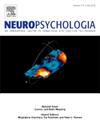Navigating image space
IF 2
3区 心理学
Q3 BEHAVIORAL SCIENCES
引用次数: 0
Abstract
Navigation means getting from here to there. Unfortunately, for biological navigation, there is no agreed definition of what we might mean by ‘here’ or ‘there’. Computer vision (‘Simultaneous Localisation and Mapping’, SLAM) uses a 3D world-based coordinate frame but that is a poor model for biological spatial representation. Another possibility is to use an image-based rather than a map-based representation. The image-based strategy is made simpler if the observer maintains fixation on a stationary point in the scene as they move. This strategy would require a system for relating different fixation points to one another as the observer moves through the environment. I describe how this can be done by, first, relating fixations to an egocentric representation of visual direction and, second, encoding egocentric representations in a coarse-to-fine hierarchy. The coarsest level of this hierarchy is, in some sense, a world-based frame as it does not vary with eye rotation or observer translation. This representation could be implemented as a ‘policy’, a term used in reinforcement learning to describe a set of states and associated actions, or a ‘graph’ that describes how images or sensory states can be connected by actions. I discuss some of the psychophysical evidence relating to these differing hypotheses about spatial representation and navigation. I argue that this evidence supports image-based rather than map-based representation.
导航图像空间
导航意味着从这里到那里。不幸的是,对于生物导航,我们对“这里”或“那里”的含义并没有统一的定义。计算机视觉(“同步定位和映射”,SLAM)使用基于世界的3D坐标框架,但这是一个糟糕的生物空间表示模型。另一种可能性是使用基于图像的表示,而不是基于地图的表示。如果观察者在移动时保持对场景中静止点的注视,基于图像的策略就会变得简单。这个策略需要一个系统,当观察者在环境中移动时,将不同的注视点彼此联系起来。我描述了如何做到这一点,首先,将注视与视觉方向的自我中心表征联系起来,其次,在一个从粗到精的层次结构中编码自我中心表征。从某种意义上说,这个层次的最粗略的层次是一个基于世界的框架,因为它不随眼睛旋转或观察者的转换而变化。这种表示可以实现为“策略”,这是强化学习中用来描述一组状态和相关动作的术语,或者是描述图像或感官状态如何通过动作连接的“图”。我将讨论一些与这些关于空间表征和导航的不同假设相关的心理物理证据。我认为这个证据支持基于图像而不是基于地图的表示。
本文章由计算机程序翻译,如有差异,请以英文原文为准。
求助全文
约1分钟内获得全文
求助全文
来源期刊

Neuropsychologia
医学-行为科学
CiteScore
5.10
自引率
3.80%
发文量
228
审稿时长
4 months
期刊介绍:
Neuropsychologia is an international interdisciplinary journal devoted to experimental and theoretical contributions that advance understanding of human cognition and behavior from a neuroscience perspective. The journal will consider for publication studies that link brain function with cognitive processes, including attention and awareness, action and motor control, executive functions and cognitive control, memory, language, and emotion and social cognition.
 求助内容:
求助内容: 应助结果提醒方式:
应助结果提醒方式:


